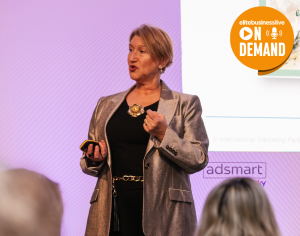Amid all the hand-wringing and second-guessing about what a ‘no-deal’ Brexit will mean for British business, one danger at least is clear – the Pound often appears as steady on its feet as a baby giraffe in ice skates.
Even in normal times, exchange rates fluctuate. But the ongoing confusion about Britain’s post-Brexit future has ramped up the volatility sharply.
In a single day at the end of July, sterling lost 1.45% of its value against the Euro, and 1.25% against the Dollar.
In the current economic climate, with growth falling and wage inflation slicing into businesses’ margins, sudden exchange rate swings can be the difference between making a profit and barely breaking even on a deal.
Shifts in the value of sterling create winners and losers of course. When the Pound weakens, British goods and services become cheaper for customers overseas. Exporters have, in theory at least, received a shot in the arm from sterling’s depreciation since Boris Johnson took the reins in Downing Street.
But for importers the opposite is true. A weakening Pound makes imports more expensive, and forces UK companies that import to make an unpleasant choice between sacrificing margin or passing on the cost to their customers.
This problem is particularly acute if you send funds overseas regularly, whether to invest, buy goods or pay overseas staff in local currency.
The reason is that unless you specify otherwise, each time you buy foreign currency the conversion will be made at the rate of the day.
The more often you make such transactions, and the larger the sums involved, the more painful a sudden fall in the Pound will be.
Global corporates, who make such transactions regularly, use a technique known as hedging to manage this currency risk.
Specialist foreign exchange companies like Fexco now allow medium-sized and smaller businesses to hedge with the same sophistication as the big beasts.
Here’s a quick guide to the main hedging strategies, and how they work.
Forward Contracts: These allow you to lock into a specific exchange rate, rather than just exchanging at the rate of the day.
Such contracts can be fixed for up to a year, and require you to make a small deposit – typically 5% of the amount to be transferred – upfront. You then pay the remainder when you send the balance. Crucially, you are protected if the exchange rate moves against you between the moment you strike the contract and the day you actually need the money.
Limit Orders: This is where you set a target exchange rate, at which your trade will be triggered automatically if the market reaches your chosen rate. They are particularly useful if you have upcoming payments with a relaxed deadline, and therefore have the time to try for a better exchange rate than what’s available right now.
Stop Loss Orders. This is where you set a minimum exchange rate, at which your trade will be triggered automatically if the market falls to your chosen rate. Stop Loss Orders are often used where there is a high risk of adverse exchange rate movement, and they enable businesses to protect their bottom line from falling below an agreed level.
Stop Loss and Limit Orders are often used together, effectively ring-fencing a desired exchange rate. If the exchange rate moves in your favour, this hybrid strategy allows you to trade at the best possible rate; and if the rate moves against you, it allows you to cut your losses before the sterling cost goes too high.
Predicting what will happen to the value of sterling in the long-term is virtually impossible. But in the short-term, the final countdown to Brexit is likely to bring further volatility and the potential for abrupt exchange rate swings that could wipe out the profit margins of the unwary who fail to hedge their currency risk.
But smaller and medium-sized companies need not be hostages to exchange rate fortune.
All businesses that trade regularly with overseas suppliers should take a leaf out of the big corporates’ book, and use hedging to bake in more certainty.
Because among all the unknowns of the coming weeks, one good bet is that exchange rates could continue to yo-yo.
Share via:








































